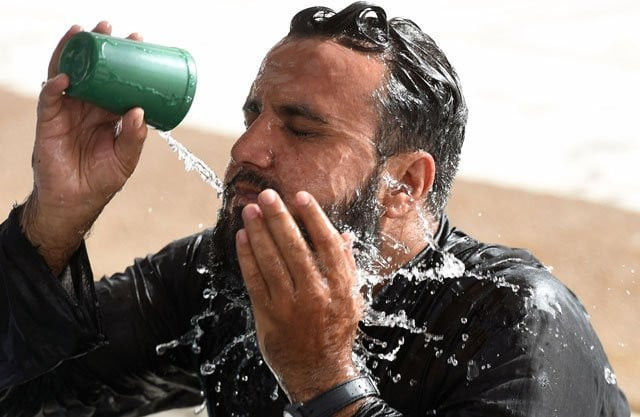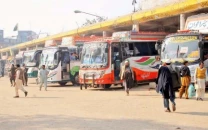Nearly half of Multan residents deprived of clean water
An estimated four million people at risk of serious health issues including cardiovascular disease

With an estimate of over four million, about 45 per cent population of Multan city is deprived of clean drinking water while leaving the residents affected by multiple viral diseases.
The faulty underground sewerage system like breakage of decades' old pipelines had reportedly caused to increase heavy metals and arsenic contamination in drinking water poses a serious threat to human life because of its toxicity.
The city's interior location like Khooni Burg with areas spread in gates named Dehli Gate, Harram gate, Boher Gate along with Rasheedaabad and Surij Miani Town had become prone to arsenic-mixed water following said reasons.
"I'm put on dialysis mainly under the reason that I'm not able to access clean drinking water" said Saleem, father of the four surviving at affected place of Khooni Burj vicinity. According to him, he used to rush at the lone nearby water filtration plant to queue for having safe drinking water as it opens for two hours daily.
The World Health Organisation had established 10 microgrammes per litre as the permissible concentration in drinking water while Multan was stated to have 50 microgrammes per litre arsenic in underground water. This was reportedly five times higher than permissible, according to report of Public Health Engineering (PHE) came out through field investigation, survey and data collection.
Arsenic was a chemical element, the elevated levels of which may cause different deadly diseases like diabetes, cardiovascular problems and various types of cancer. Moreover, early childhood exposure had been linked to negative impacts on cerebral development that leads to increasing deaths in young adults.
According Assistant Professor of Pathology, Nishtar hospital Dr. Abuzar Raza, it had reported increased cases of impaired nerve function, peptic diseases, cardiovascular, pulmonary diseases and gastroenteritis.
The city was running with over 100 water filtration schemes under joint venture of PHE and rural water management in the city, with 100-102 tube wells working out by Water and Sanitation Authority (WASA).
However, what the sanitation authority had termed as the lack of requisite resources is halting maintenance of filtration plants up to the desired level. A water plant once being checked out by two monitoring evaluation officials takes next turn for same checking after four or five months at least by the same administrators.
"The department is able to look after all filtration plants through two monitoring officials by single motorbike," according to secretary of water testing laboratory Khalid Javed.
Water executive engineer Abdussalam, however, did not agree with the report, saying that WASA had so far able to manage pure water for larger parts of city by extending a strong net of underground water pipelines. "I do not agree with excerpts of WHO report as arsenic level has touched around 50 micro-grammes per litre in the entire district.
"We use to conduct third party valuation of water after every three weeks here to ensure purity of drinking water,” he claimed.
According to WASA Public Relations Officer Hassan Bukhari, about 80% water pipelines consisted of around 1,400 kms were laid in the 1990's decade in the city. WASA Managing Director (MD) Nasir Iqbal in his remarks said that clean drinking water schemes would start in the region from January next year.
The MD further said schemes that were going to be started with an amount of Rs1 billion. However, it would take about two years to provide clean drinking water to the citizens across the city, he added.
Published in The Express Tribune, October 25th, 2021.



















COMMENTS
Comments are moderated and generally will be posted if they are on-topic and not abusive.
For more information, please see our Comments FAQ